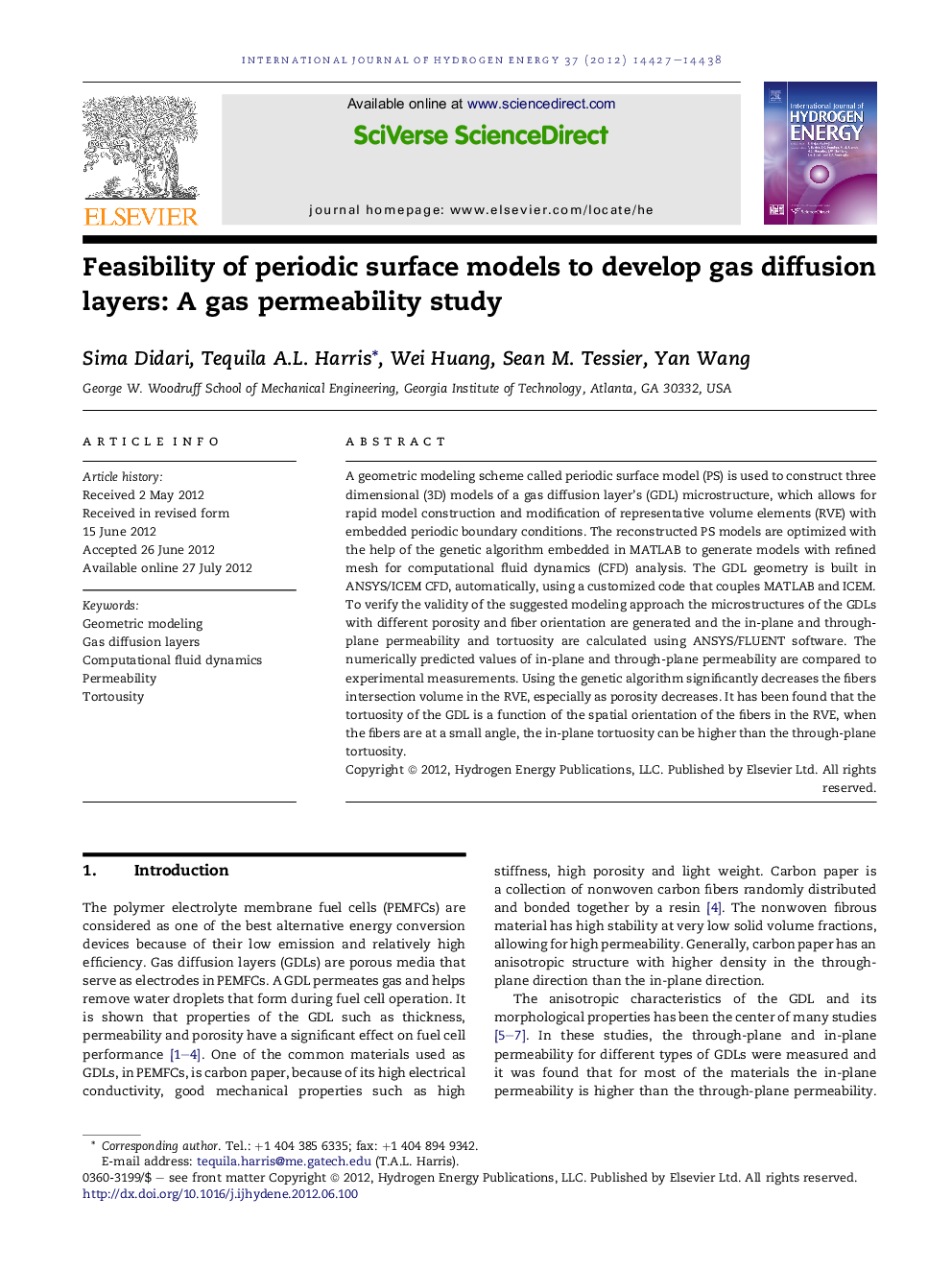| Article ID | Journal | Published Year | Pages | File Type |
|---|---|---|---|---|
| 1274790 | International Journal of Hydrogen Energy | 2012 | 12 Pages |
A geometric modeling scheme called periodic surface model (PS) is used to construct three dimensional (3D) models of a gas diffusion layer's (GDL) microstructure, which allows for rapid model construction and modification of representative volume elements (RVE) with embedded periodic boundary conditions. The reconstructed PS models are optimized with the help of the genetic algorithm embedded in MATLAB to generate models with refined mesh for computational fluid dynamics (CFD) analysis. The GDL geometry is built in ANSYS/ICEM CFD, automatically, using a customized code that couples MATLAB and ICEM. To verify the validity of the suggested modeling approach the microstructures of the GDLs with different porosity and fiber orientation are generated and the in-plane and through-plane permeability and tortuosity are calculated using ANSYS/FLUENT software. The numerically predicted values of in-plane and through-plane permeability are compared to experimental measurements. Using the genetic algorithm significantly decreases the fibers intersection volume in the RVE, especially as porosity decreases. It has been found that the tortuosity of the GDL is a function of the spatial orientation of the fibers in the RVE, when the fibers are at a small angle, the in-plane tortuosity can be higher than the through-plane tortuosity.
► The microstructure of a GDL can be accurately generated using periodic surface modeling. ► A genetic algorithm allowed for the volume of fiber intersections to be minimized. ► The orientation and position of the fibers will affect the permeability of the GDL. ► The spatial orientation determines the degree of in-plane and through-plane tortuosity.
